您好,登錄后才能下訂單哦!
您好,登錄后才能下訂單哦!
這篇文章將為大家詳細講解有關Intellij IDEA怎么通過數據庫表生成帶注解的實體類,小編覺得挺實用的,因此分享給大家做個參考,希望大家閱讀完這篇文章后可以有所收獲。
第一步:新建一個Maven項目。項目的名稱為JpaDemo。
我這里是通過idea插件對應的spring項目生成器https://start.spring.io,直接生成項目。如圖:
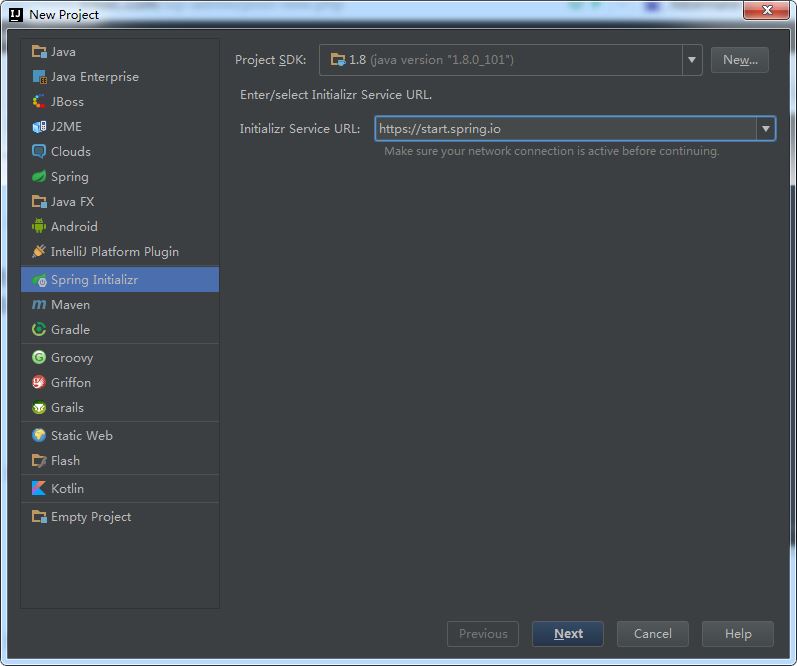
下一步,修改成對應項目的基本信息。如圖:
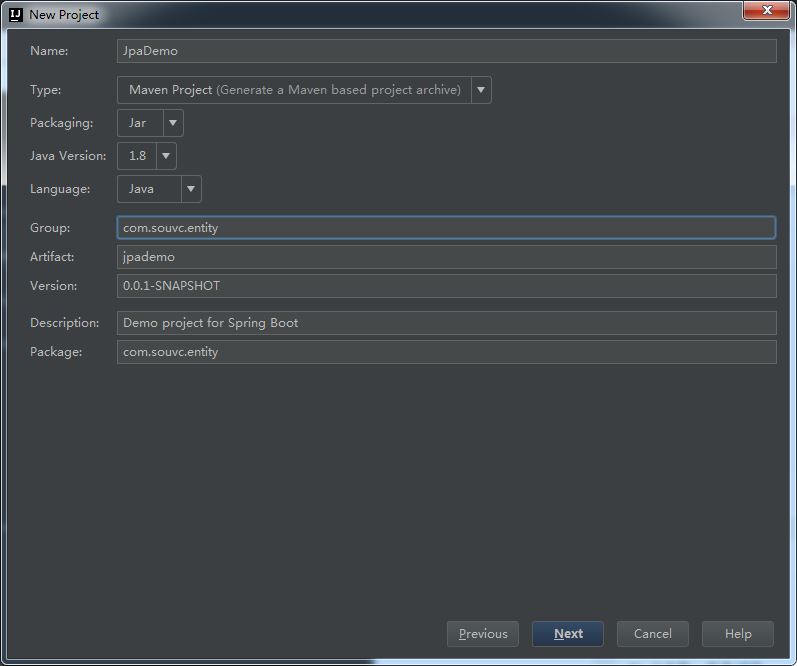
選擇相應的依賴jar包。

選擇項目的位置
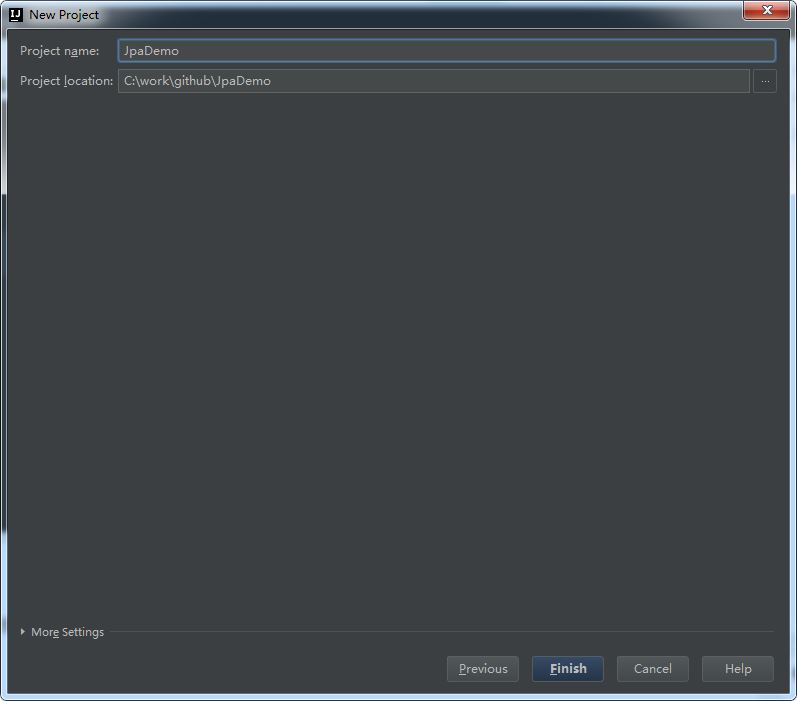
完成創建
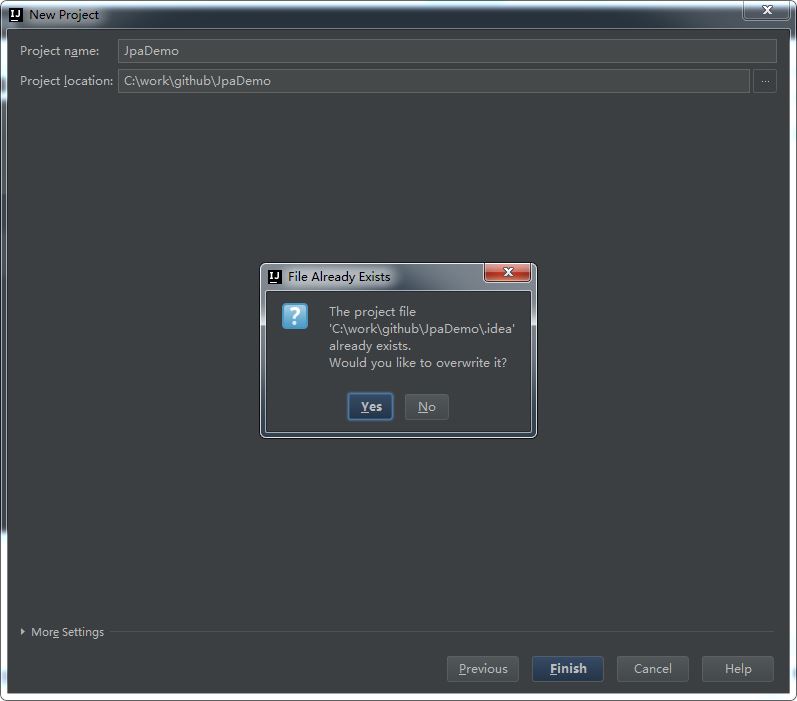
溫馨提示,之前需要安裝好maven。
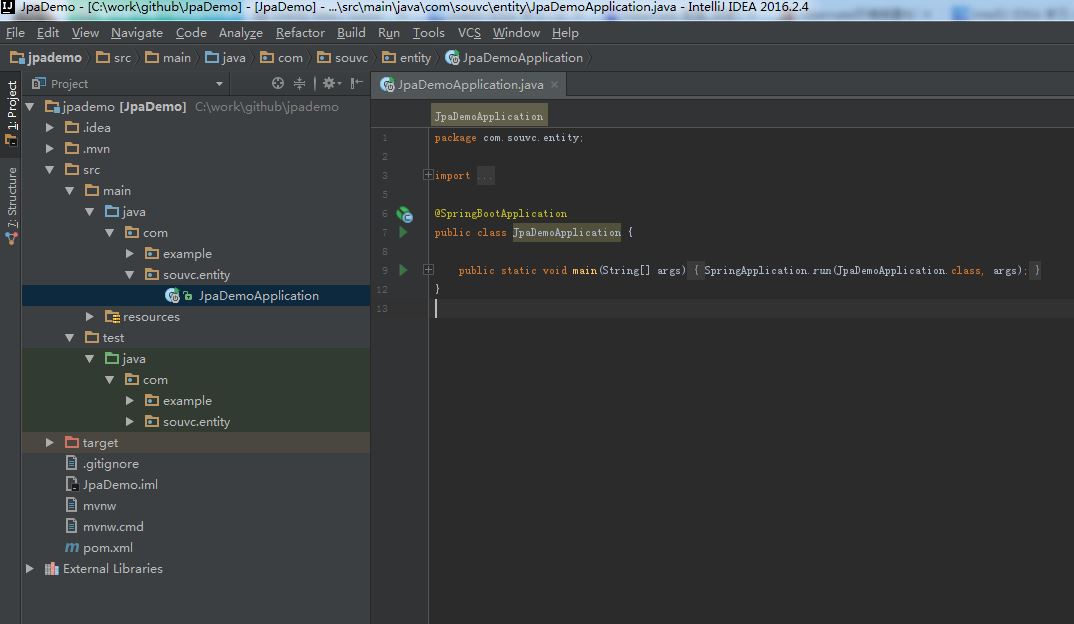
第二步:配置數據庫連接。
選擇Mysql。
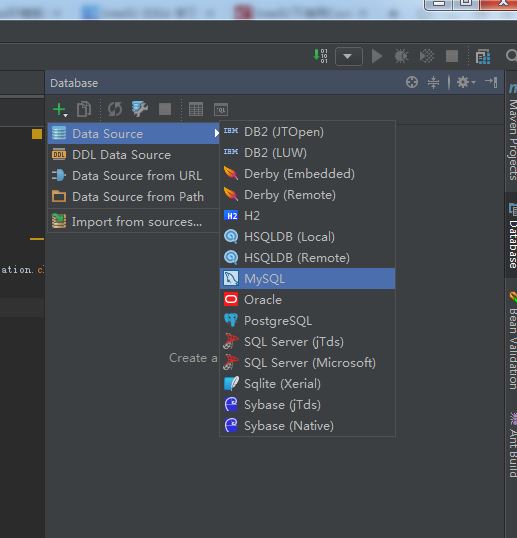
配置數據庫基本信息
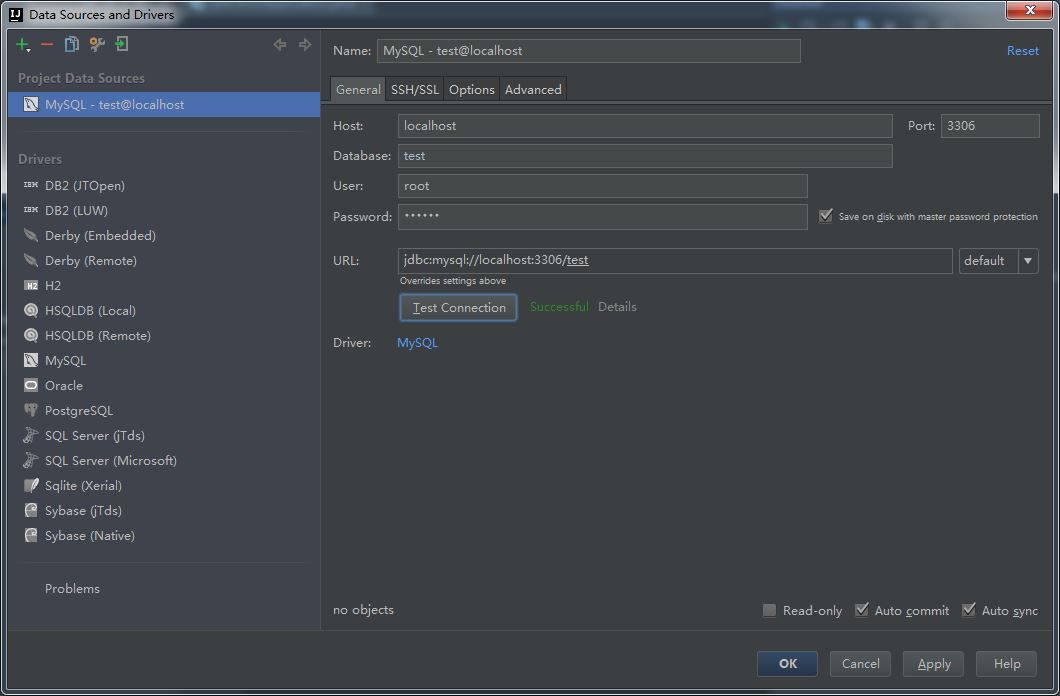
其實配置了這個數據庫連接之后,是可以直接通過腳本進行導出數據庫實體類了,但是這個導出的實體類比較簡陋,需要進行修改比較多,或是需要自己進行修改生成腳本語句。如:
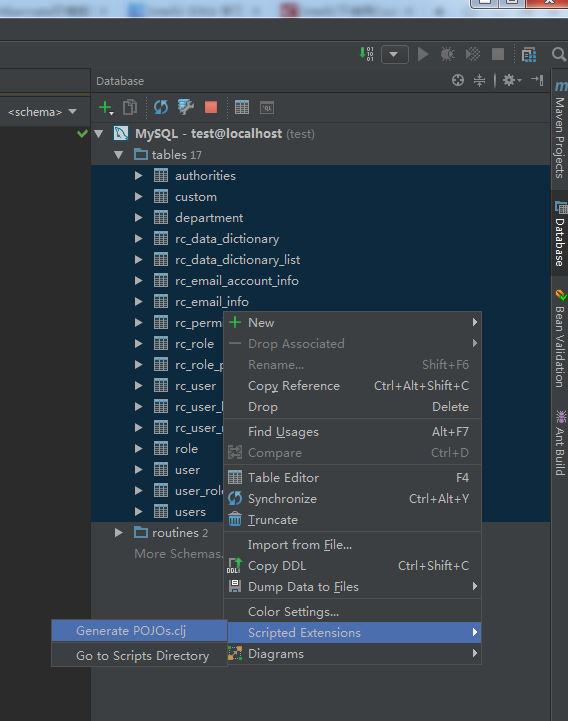
通過generate POJOs.clj即可導出實體類。
需要選一下實體類放置的地方。
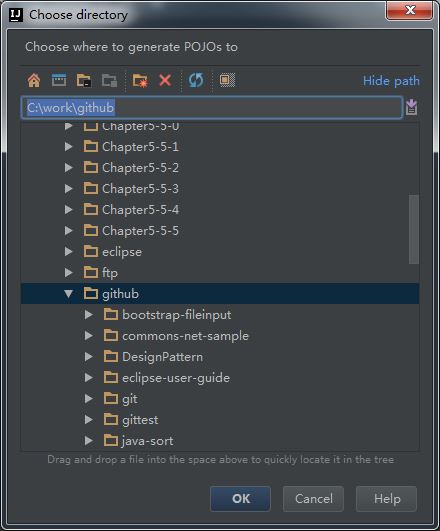
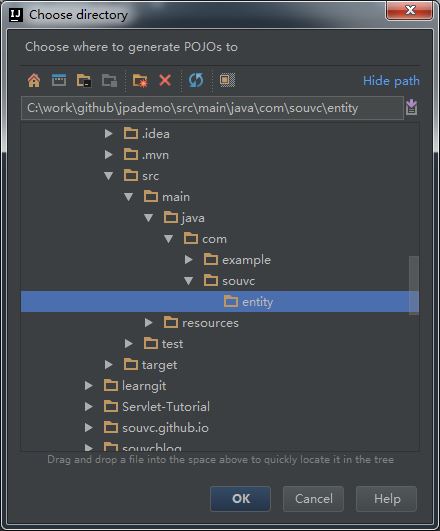
效果如下:
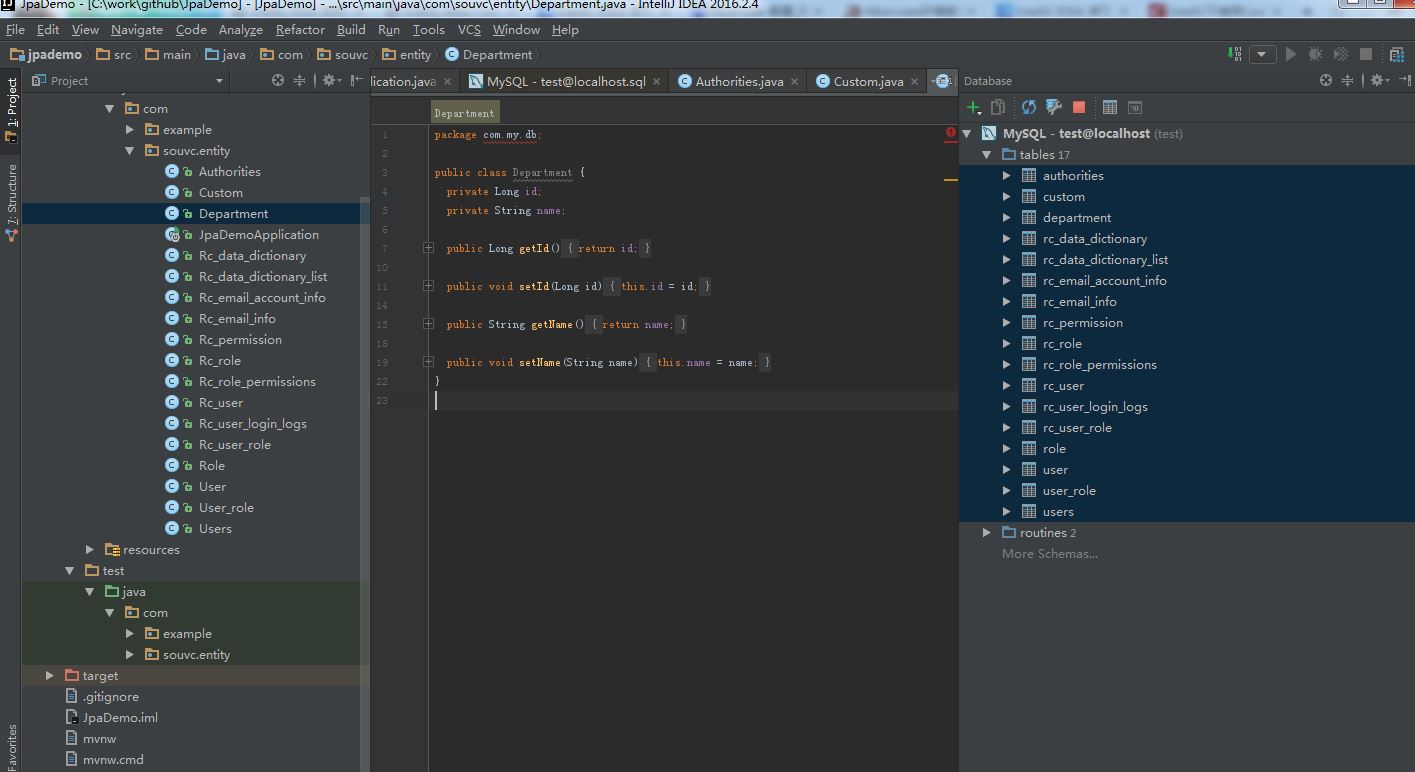
但是以上的實體類沒有帶注解。那么我們通過項目中用到hibernate,或是jpa需要加注解怎么辦,總不能一個個注解加上去吧。idea當然不會這么干啦。
使用IntelliJ IDEA快編碼速度:我們程序員的工作不是寫程序,而是寫程序解決問題。那我們刪了之前生成的實體類。我們重新生成一份帶注解的實體類。
第三步:配置hibernate文件。
如果沒有配置該配置文件,idea則沒有顯示出生成實體類的工具選項。
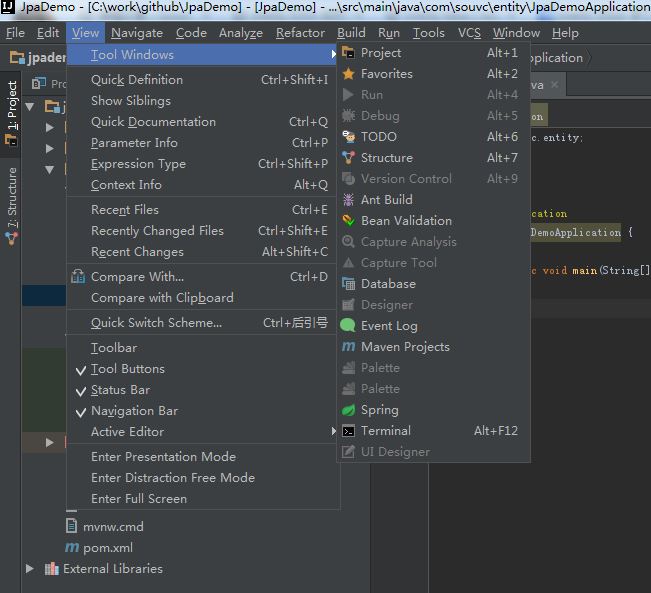
配置一下hibernate配置文件。
在資源文件下新建一個hibernate.cfg.xml配置文件。并輸入以下內容。
<?xml version='1.0' encoding='utf-8'?> <!DOCTYPE hibernate-configuration PUBLIC "-//Hibernate/Hibernate Configuration DTD 3.0//EN" "http://www.hibernate.org/dtd/hibernate-configuration-3.0.dtd"> <hibernate-configuration> <session-factory> <!-- Database connection settings --> <property name="connection.driver_class">com.mysql.jdbc.Driver</property> <property name="connection.url">jdbc:mysql://localhost/test</property> <property name="connection.username">root</property> <property name="connection.password">123456</property> <!-- JDBC connection pool (use the built-in) --> <!-- <property name="connection.pool_size">1</property> --> <!-- SQL dialect --> <property name="dialect">org.hibernate.dialect.MySQLDialect</property> <!-- Enable Hibernate's automatic session context management --> <property name="current_session_context_class">thread</property> <!-- Echo all executed SQL to stdout --> <property name="show_sql">true</property> <!-- Drop and re-create the database schema on startup --> <!-- <property name="hbm2ddl.auto">update</property> --> </session-factory> </hibernate-configuration>
如圖:
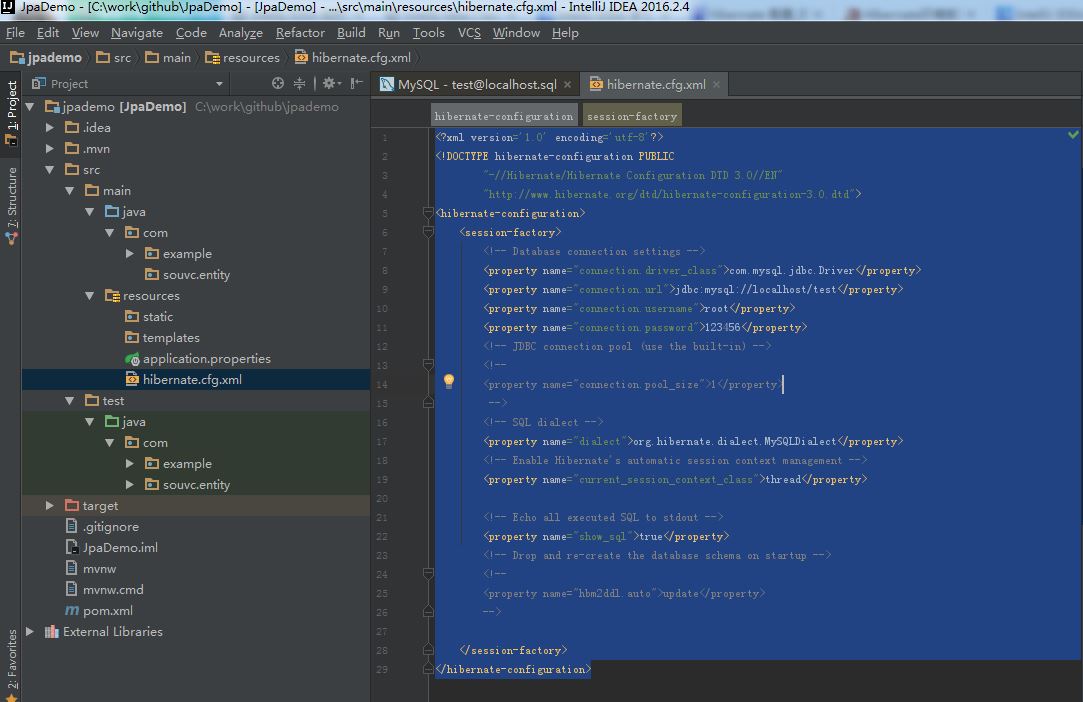
第四步:調出idea實體類生成工具。
調出生成實體類的配置工具
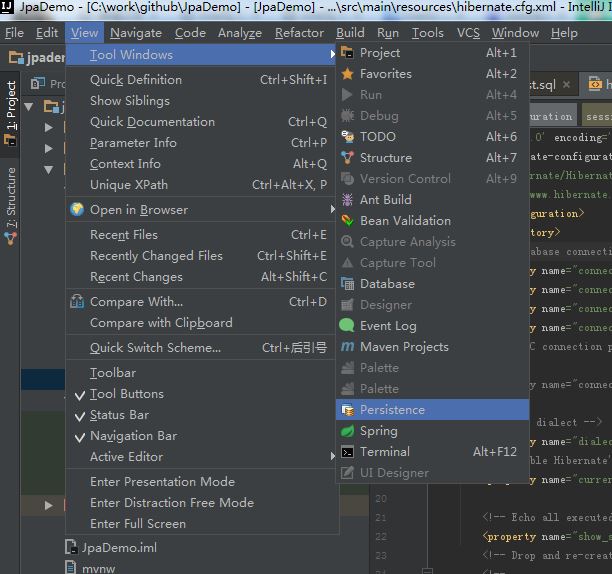
保存后。在主面板左側有persistence,在hibernate圖標上點擊右鍵-Generate Persistence Mapping-By Database Scheme。
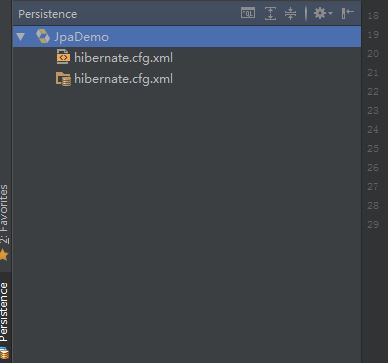
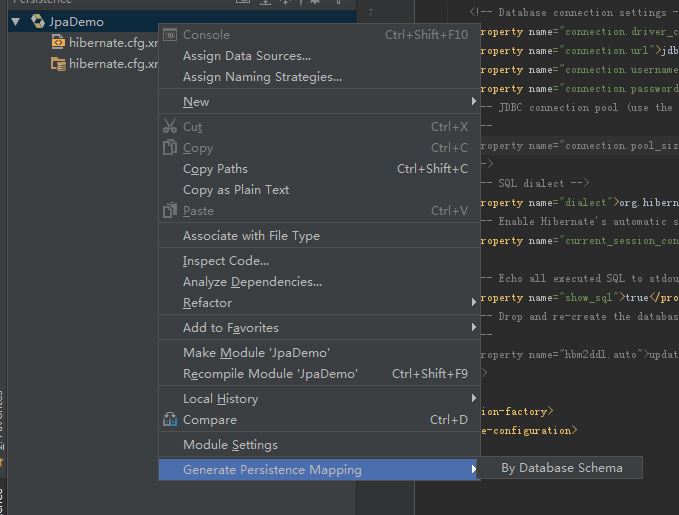
一開始是沒有選中數據源的。
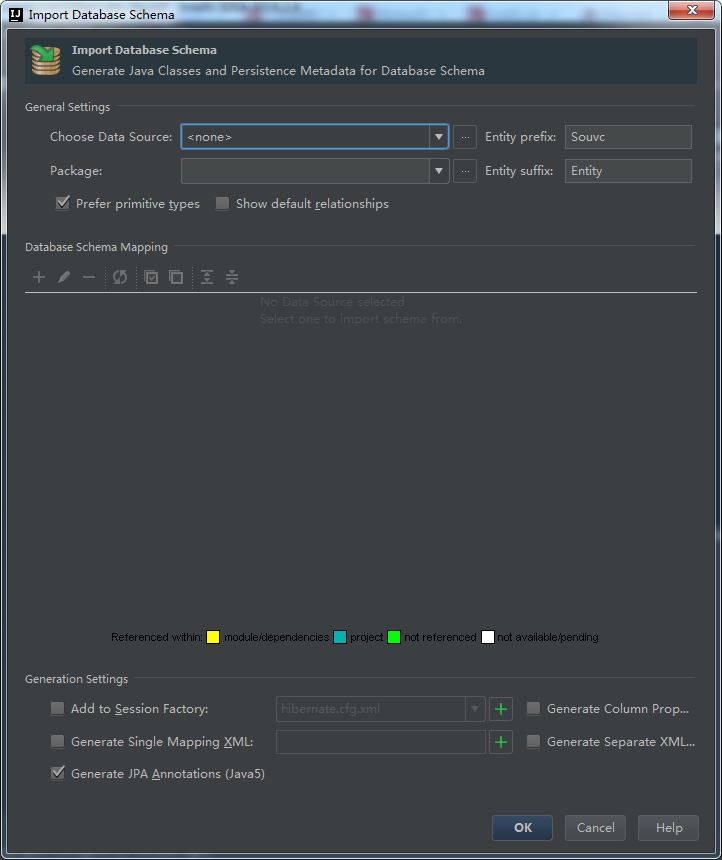
配置選項
(1)數據源選擇
(2)生成實體類的位置
(3)實體類的前綴和后綴
(4)可以全選表,或是全不選表
(5)可以生成hibernate的實體類對應的xml文件
(6)展開表之后可以修改對應之間的類型。
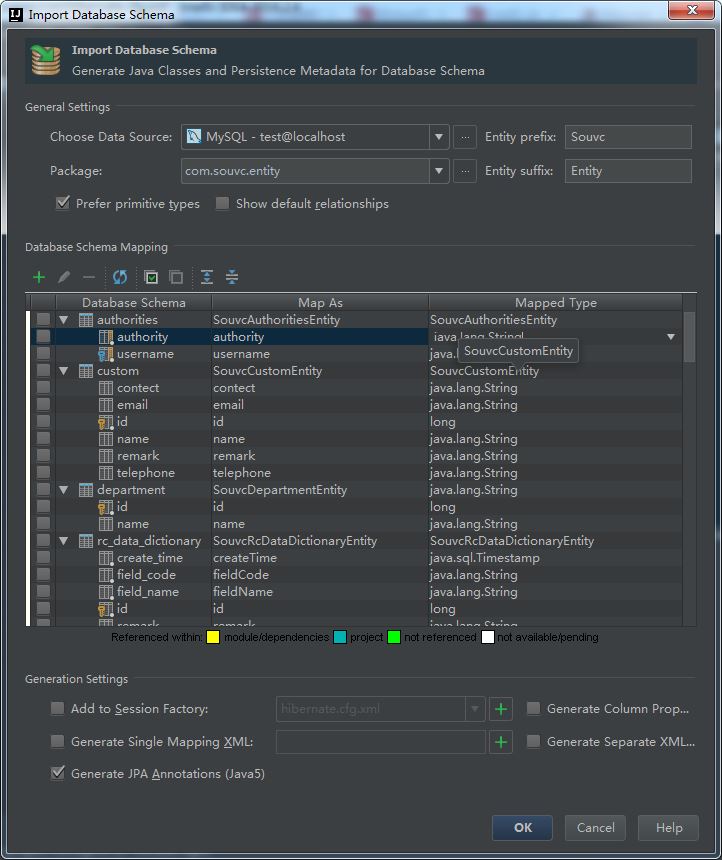
第五步:選中需要執行的數據庫表。
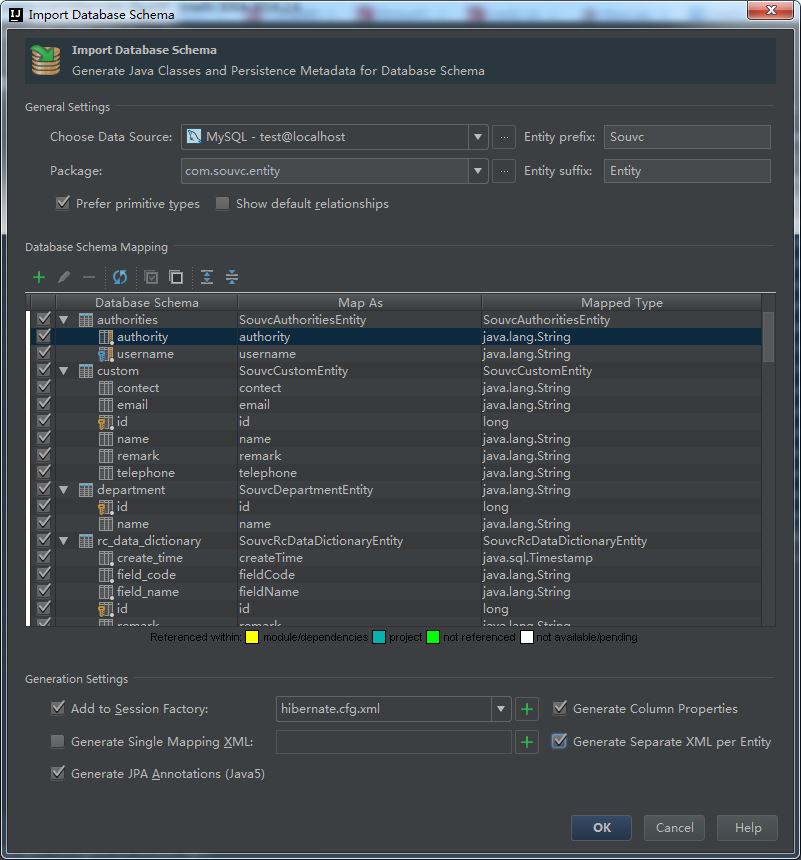
第六步:查看導出的效果。
生成過程

導出的結果
可以查看其中的一個實體類,看看效果。
package com.souvc.entity;
import javax.persistence.Basic;
import javax.persistence.Column;
import javax.persistence.Entity;
import javax.persistence.Table;
/**
* Created by Administrator on 2017/3/22.
*/
@Entity
@Table(name = "authorities", schema = "test", catalog = "")
public class SouvcAuthoritiesEntity {
private String username;
private String authority;
@Basic
@Column(name = "username", nullable = false, length = 50)
public String getUsername() {
return username;
}
public void setUsername(String username) {
this.username = username;
}
@Basic
@Column(name = "authority", nullable = false, length = 50)
public String getAuthority() {
return authority;
}
public void setAuthority(String authority) {
this.authority = authority;
}
@Override
public boolean equals(Object o) {
if (this == o) return true;
if (o == null || getClass() != o.getClass()) return false;
SouvcAuthoritiesEntity that = (SouvcAuthoritiesEntity) o;
if (username != null ? !username.equals(that.username) : that.username != null) return false;
if (authority != null ? !authority.equals(that.authority) : that.authority != null) return false;
return true;
}
@Override
public int hashCode() {
int result = username != null ? username.hashCode() : 0;
result = 31 * result + (authority != null ? authority.hashCode() : 0);
return result;
}
}hibernate主配置文件
<?xml version='1.0' encoding='utf-8'?> <!DOCTYPE hibernate-configuration PUBLIC "-//Hibernate/Hibernate Configuration DTD 3.0//EN" "http://www.hibernate.org/dtd/hibernate-configuration-3.0.dtd"> <hibernate-configuration> <session-factory> <!-- Database connection settings --> <property name="connection.driver_class">com.mysql.jdbc.Driver</property> <property name="connection.url">jdbc:mysql://localhost:3306/test</property> <!-- JDBC connection pool (use the built-in) --> <!-- <property name="connection.pool_size">1</property> --> <!-- SQL dialect --> <property name="dialect">org.hibernate.dialect.MySQLDialect</property> <!-- Enable Hibernate's automatic session context management --> <property name="current_session_context_class">thread</property> <!-- Echo all executed SQL to stdout --> <property name="show_sql">true</property> <mapping class="com.souvc.entity.SouvcAuthoritiesEntity"/> <mapping resource="com/souvc/entity/SouvcAuthoritiesEntity.hbm.xml"/> <mapping resource="com/souvc/entity/SouvcCustomEntity.hbm.xml"/> <mapping class="com.souvc.entity.SouvcCustomEntity"/> <mapping class="java.lang.String"/> <mapping resource="java/lang/java.lang.String.hbm.xml"/> <mapping class="com.souvc.entity.SouvcRcDataDictionaryEntity"/> <mapping resource="com/souvc/entity/SouvcRcDataDictionaryEntity.hbm.xml"/> <mapping class="com.souvc.entity.SouvcRcDataDictionaryListEntity"/> <mapping resource="com/souvc/entity/SouvcRcDataDictionaryListEntity.hbm.xml"/> <mapping class="com.souvc.entity.SouvcRcEmailAccountInfoEntity"/> <mapping resource="com/souvc/entity/SouvcRcEmailAccountInfoEntity.hbm.xml"/> <mapping class="com.souvc.entity.SouvcRcEmailInfoEntity"/> <mapping resource="com/souvc/entity/SouvcRcEmailInfoEntity.hbm.xml"/> <mapping class="com.souvc.entity.SouvcRcPermissionEntity"/> <mapping resource="com/souvc/entity/SouvcRcPermissionEntity.hbm.xml"/> <mapping resource="com/souvc/entity/SouvcRcRoleEntity.hbm.xml"/> <mapping class="com.souvc.entity.SouvcRcRoleEntity"/> <mapping class="com.souvc.entity.SouvcRcRolePermissionsEntity"/> <mapping resource="com/souvc/entity/SouvcRcRolePermissionsEntity.hbm.xml"/> <mapping class="com.souvc.entity.SouvcRcUserEntity"/> <mapping resource="com/souvc/entity/SouvcRcUserEntity.hbm.xml"/> <mapping class="com.souvc.entity.SouvcRcUserLoginLogsEntity"/> <mapping resource="com/souvc/entity/SouvcRcUserLoginLogsEntity.hbm.xml"/> <mapping class="com.souvc.entity.SouvcRcUserRoleEntity"/> <mapping resource="com/souvc/entity/SouvcRcUserRoleEntity.hbm.xml"/> <mapping class="com.souvc.entity.SouvcRoleEntity"/> <mapping resource="com/souvc/entity/SouvcRoleEntity.hbm.xml"/> <mapping class="com.souvc.entity.SouvcUserEntity"/> <mapping resource="com/souvc/entity/SouvcUserEntity.hbm.xml"/> <mapping class="com.souvc.entity.SouvcUserRoleEntity"/> <mapping resource="com/souvc/entity/SouvcUserRoleEntity.hbm.xml"/> <mapping class="com.souvc.entity.SouvcUsersEntity"/> <mapping resource="com/souvc/entity/SouvcUsersEntity.hbm.xml"/> <!-- Drop and re-create the database schema on startup --> <!-- <property name="hbm2ddl.auto">update</property> --> </session-factory> </hibernate-configuration>
其他配置文件 、
<?xml version='1.0' encoding='utf-8'?> <!DOCTYPE hibernate-mapping PUBLIC "-//Hibernate/Hibernate Mapping DTD 3.0//EN" "http://www.hibernate.org/dtd/hibernate-mapping-3.0.dtd"> <hibernate-mapping> <class name="com.souvc.entity.SouvcAuthoritiesEntity" table="authorities" schema="test"> <property name="username"> <column name="username" sql-type="varchar(50)" length="50"/> </property> <property name="authority"> <column name="authority" sql-type="varchar(50)" length="50"/> </property> </class> </hibernate-mapping>
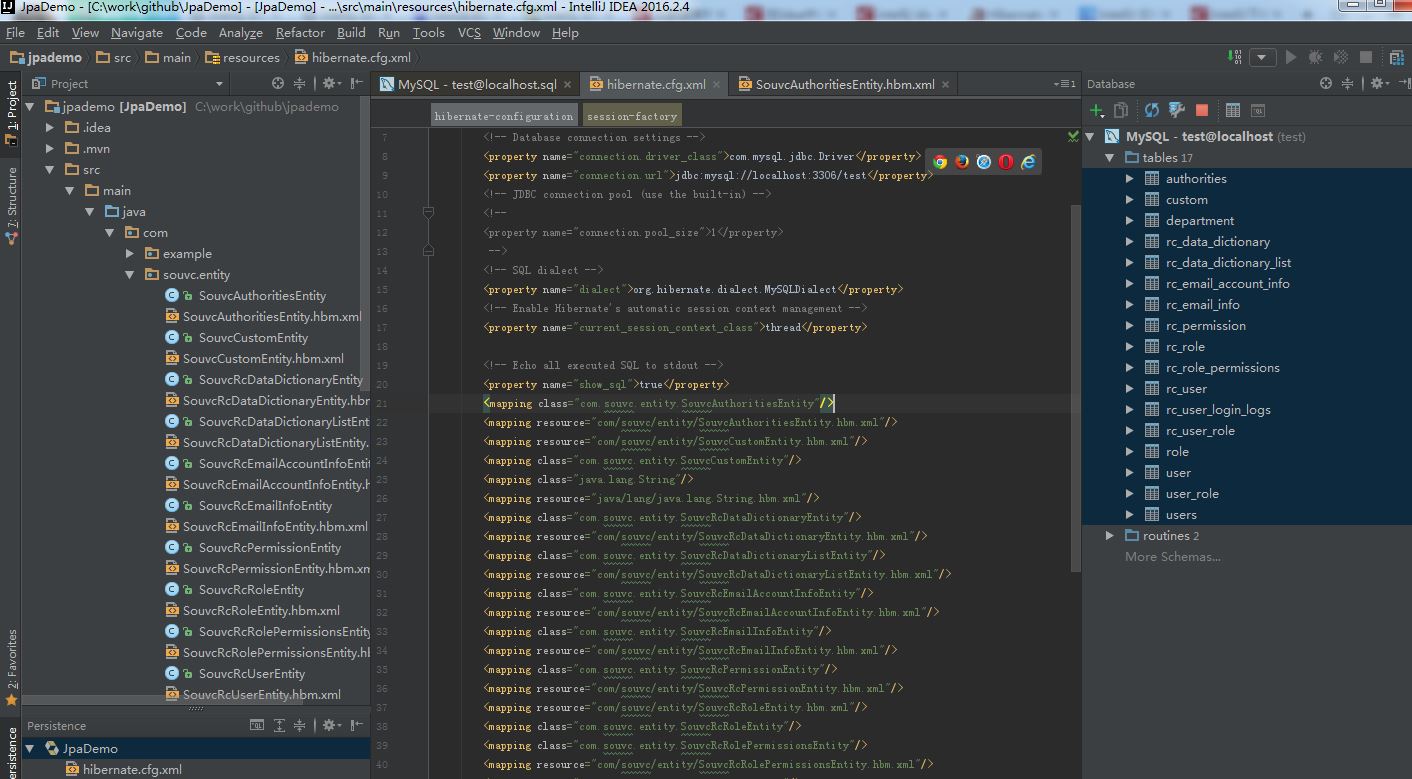
關于“Intellij IDEA怎么通過數據庫表生成帶注解的實體類”這篇文章就分享到這里了,希望以上內容可以對大家有一定的幫助,使各位可以學到更多知識,如果覺得文章不錯,請把它分享出去讓更多的人看到。
免責聲明:本站發布的內容(圖片、視頻和文字)以原創、轉載和分享為主,文章觀點不代表本網站立場,如果涉及侵權請聯系站長郵箱:is@yisu.com進行舉報,并提供相關證據,一經查實,將立刻刪除涉嫌侵權內容。